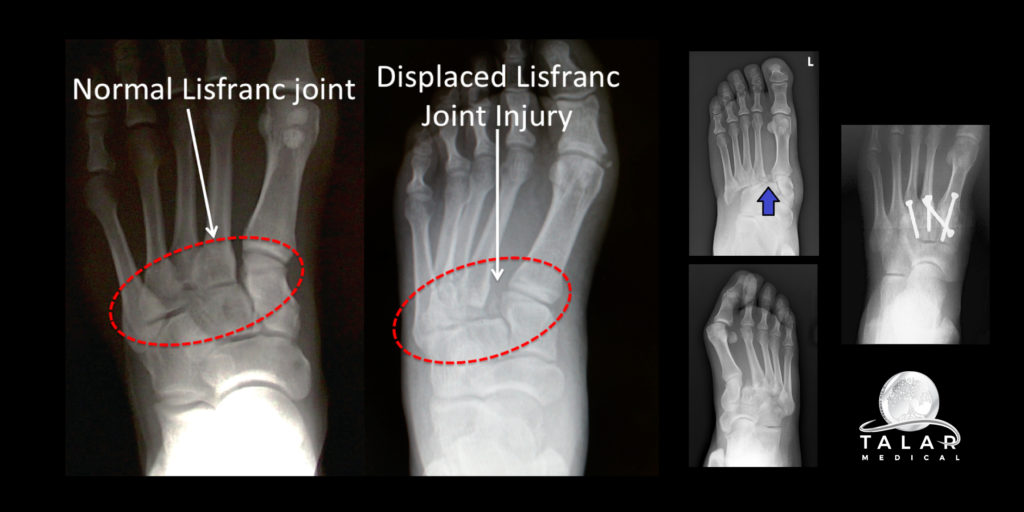Cam Newton is out of the game for the rest of the season and his injury has made Lisfranc sprains a household phrase.
Podiatric Physicians know how tricky it can be to diagnose and treat a lisfranc sprain and there are a lot of different schools of thought as to the best course of action. What we all agree on, is that it is imperative for our athletes to take this injury seriously and not try to push through it.
For sports fans to better understand what happened to Cam, here is an over view from Dr. Stephen Corey, DPM.

The Lisfranc joint is the point at which the metatarsal bones (long bones leading up to the toes and ball of foot) and the tarsal bones (bones in the arch) connect in the middle of the foot. These two bones are joined by a tough band of tissue, called the Lisfranc ligament which is important for maintaining proper alignment and strength of the joint.
Lisfranc injuries occur when direct or indirect force is applied to the foot. Direct force often involves something heavy falling on the foot. Indirect force commonly involves twisting of the foot.
Lisfranc injuries occur when direct or indirect force is applied to the foot. Direct force often involves something heavy falling on the foot. Indirect force commonly involves twisting of the foot.
There are three types of Lisfranc injuries, a sprain, fracture or dislocation. These types of injuries can sometimes occur together.
Treatment by the foot and ankle surgeon depends on the type and severity of the Lisfranc injury and may include the foot being placed in a cast or cam walker to keep it immobile, crutches are usually used to avoid putting weight on the injured foot. Swelling is reduced by icing the affected area and keeping the foot elevated.
Certain types of Lisfranc injuries require surgery. The foot and ankle surgeon will determine the type of procedure that is best suited to the individual patient. Some injuries of this type may require emergency surgery.
What is consistent with all injuries of this type is that timely treatment and rehabilitation are key to proper healing.
Bottom line to our athletes:
don’t play through the pain!!
It will worsen your outcome and increase the length of time you will spend out of the game!
– Dr. Stephen Corey, DPM.


